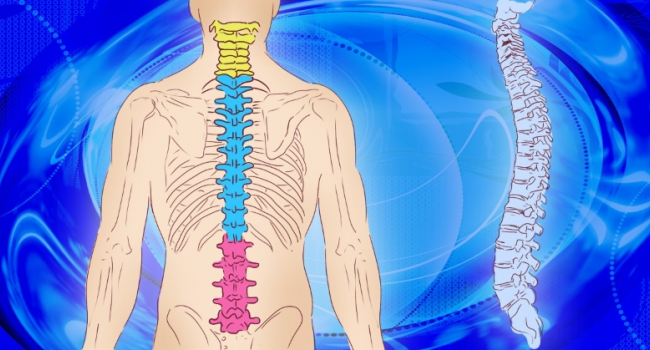Researchers study early spinal response to injury and ways to improve it
 15:28 15 October, 2019
15:28 15 October, 2019Cells in the outer region of the vertebral discs experience stress and start the healing process at a lower level after injuries, which, researchers found, can be temporarily blocked by drugs that calm the cells, Science Daily reported.
"This work sheds light on some of the challenges we are going to face in slowing disc degeneration and preventing back pain," said Edward Bonnevie, PhD, a post-doctoral fellow in Penn Medicine's McKay Orthopaedic Research Laboratory. "Most spine research focuses on the inner part of the disc, but our work highlights the fact that we need to treat the whole disc, and we believe doing so may lead to the identification of new targets for therapy."
Disks in the spine are under pressure and have a structure similar to water balloons, while in the inner area the water-attracting proteins are limited by the outer layer of fibrous tissue containing cells that are constantly stretched. Discs are designed to soften the vertebrae from direct and painful contact with each other. Robert L. Mauck, professor of orthopedic surgery and laboratory director at Mackay, and his fellow researchers have decided to focus their research on the often overlooked outer disc area.
"We know that cells in the inner region undergo changes as a result of disc injury and degeneration, and researchers have tried to restore function to those cells," Bonnevie said. "But you can think of that like trying to fill up a water balloon that already has holes -- it isn't a viable treatment option by itself."
In the biomaterials created by the researchers to simulate the tissue of the outer region of the discs, they saw that with an injury like slipping of a disc and loss of pressure, the tissue suddenly released becomes disorganized. They found that in small animals, this leads to the formation of regenerative tissue, which is not like normal tissue, but instead has the characteristics of scar tissue.
In addition, they found that programmed cell death, known as apoptosis, occurs quickly, within 24 hours after the injury. This creates a problem because, unlike other areas of the body, the cells on the discs do not have blood supply and cannot easily be populated with new cells necessary for regeneration.
With the discoveries of why disc cells respond the way they do upon pressure loss, the team found that using a biological inhibitor of cell contraction, such as fasudil, could effectively "relax" the cells from the shock of suddenly losing their typical stretched state. Once relaxed, the cells would delay their default healing response, which has the potential to buy doctors what is called a "therapeutic window" to intervene.
"These data show us that treating disc injuries very soon after injury is essential, before this transition in phenotype occurs and the scar tissue forms. This could be done using inhibitors like fasudil applied systemically, or potentially in combination with surgical implantation of biomaterials that are designed to restore the native tissue structure and function," Mauck explained.